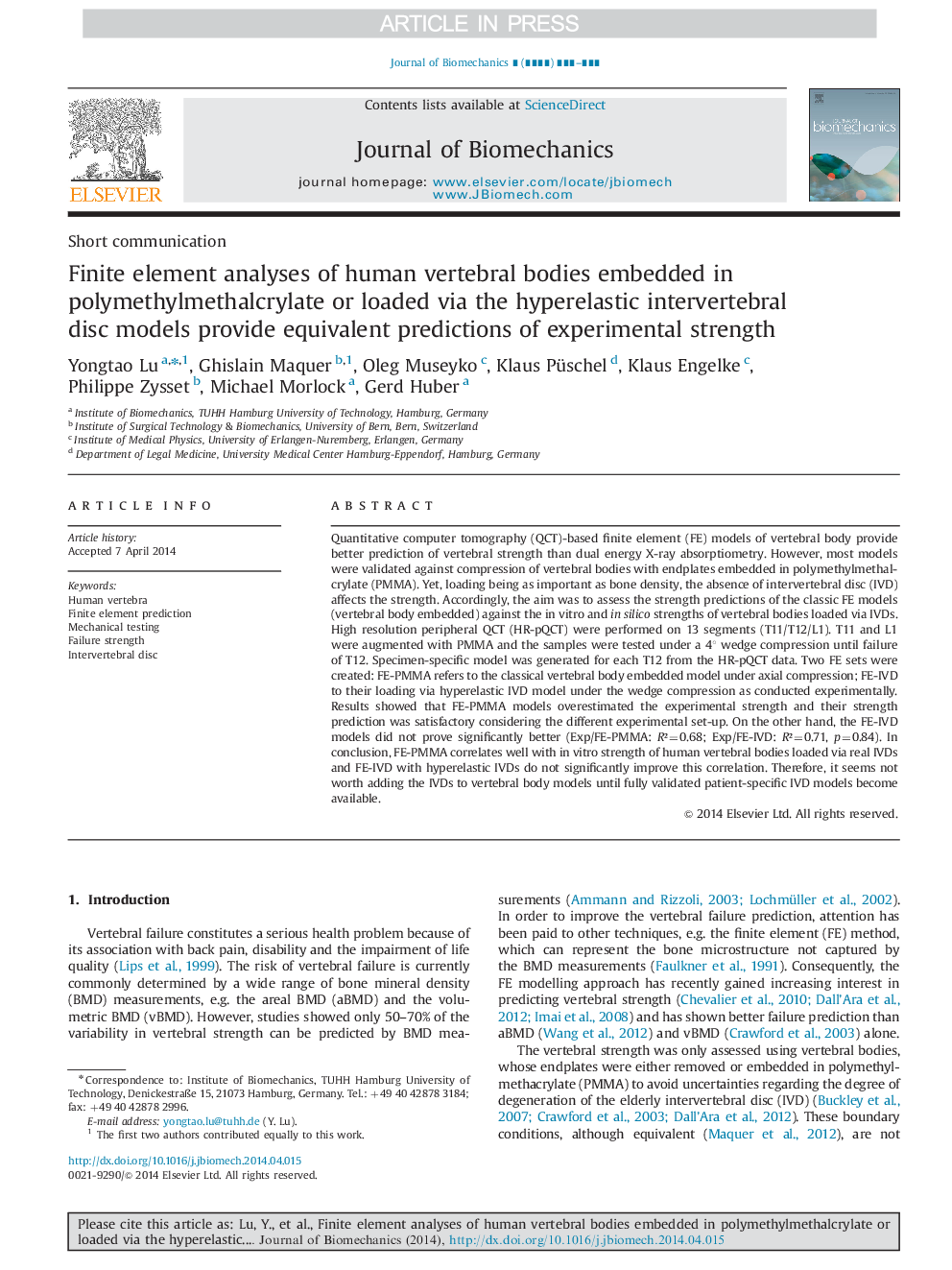| کد مقاله | کد نشریه | سال انتشار | مقاله انگلیسی | نسخه تمام متن |
|---|---|---|---|---|
| 10431810 | 910226 | 2014 | 5 صفحه PDF | دانلود رایگان |
عنوان انگلیسی مقاله ISI
Finite element analyses of human vertebral bodies embedded in polymethylmethalcrylate or loaded via the hyperelastic intervertebral disc models provide equivalent predictions of experimental strength
ترجمه فارسی عنوان
تجزیه و تحلیل عنصر محدودی از بدن انسان مهره دار که در پلیتوسیتیل متالکریلات لخته شده و یا از طریق مدل دیسک بین وریدی هیپرآلستیکی بارگذاری شده، پیش بینی های معکوس از قدرت تجربی را فراهم می کند
دانلود مقاله + سفارش ترجمه
دانلود مقاله ISI انگلیسی
رایگان برای ایرانیان
کلمات کلیدی
مهره انسانی، پیش بینی عنصر محدود، تست مکانیکی، قدرت شکست دیسک بین مهره ای،
موضوعات مرتبط
مهندسی و علوم پایه
سایر رشته های مهندسی
مهندسی پزشکی
چکیده انگلیسی
Quantitative computer tomography (QCT)-based finite element (FE) models of vertebral body provide better prediction of vertebral strength than dual energy X-ray absorptiometry. However, most models were validated against compression of vertebral bodies with endplates embedded in polymethylmethalcrylate (PMMA). Yet, loading being as important as bone density, the absence of intervertebral disc (IVD) affects the strength. Accordingly, the aim was to assess the strength predictions of the classic FE models (vertebral body embedded) against the in vitro and in silico strengths of vertebral bodies loaded via IVDs. High resolution peripheral QCT (HR-pQCT) were performed on 13 segments (T11/T12/L1). T11 and L1 were augmented with PMMA and the samples were tested under a 4° wedge compression until failure of T12. Specimen-specific model was generated for each T12 from the HR-pQCT data. Two FE sets were created: FE-PMMA refers to the classical vertebral body embedded model under axial compression; FE-IVD to their loading via hyperelastic IVD model under the wedge compression as conducted experimentally. Results showed that FE-PMMA models overestimated the experimental strength and their strength prediction was satisfactory considering the different experimental set-up. On the other hand, the FE-IVD models did not prove significantly better (Exp/FE-PMMA: R²=0.68; Exp/FE-IVD: R²=0.71, p=0.84). In conclusion, FE-PMMA correlates well with in vitro strength of human vertebral bodies loaded via real IVDs and FE-IVD with hyperelastic IVDs do not significantly improve this correlation. Therefore, it seems not worth adding the IVDs to vertebral body models until fully validated patient-specific IVD models become available.
ناشر
Database: Elsevier - ScienceDirect (ساینس دایرکت)
Journal: Journal of Biomechanics - Volume 47, Issue 10, 18 July 2014, Pages 2512-2516
Journal: Journal of Biomechanics - Volume 47, Issue 10, 18 July 2014, Pages 2512-2516
نویسندگان
Yongtao Lu, Ghislain Maquer, Oleg Museyko, Klaus Püschel, Klaus Engelke, Philippe Zysset, Michael Morlock, Gerd Huber,
